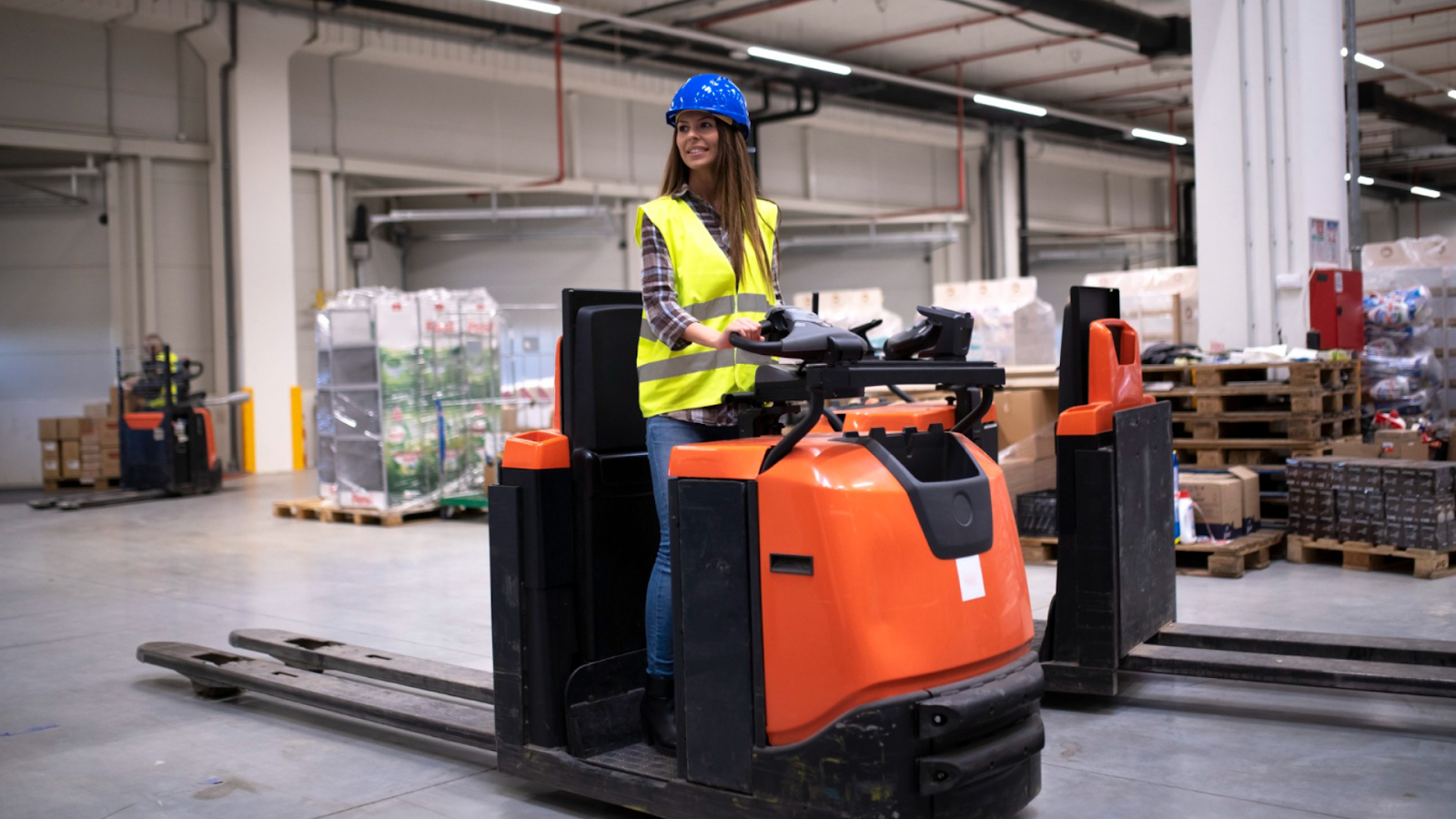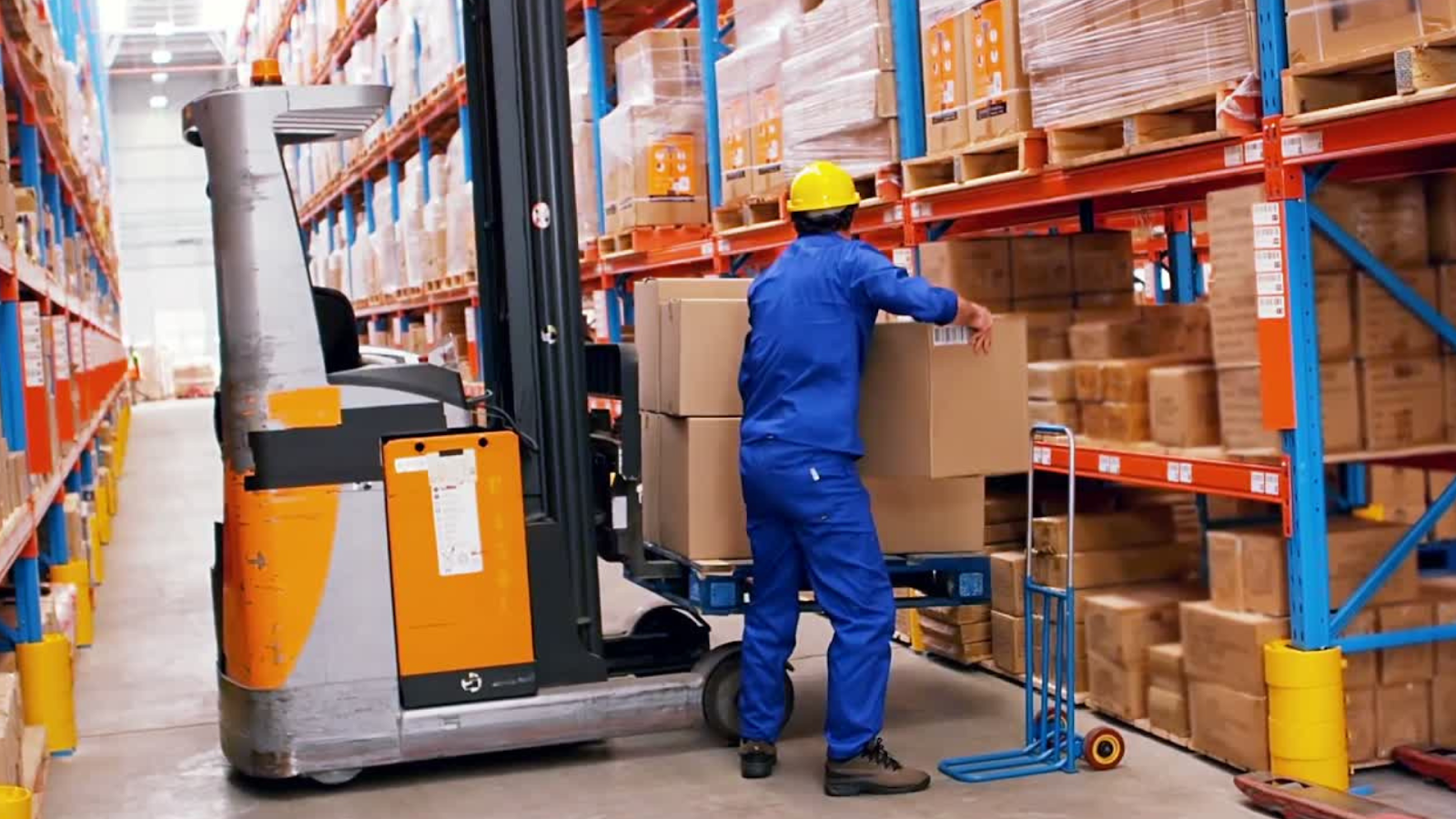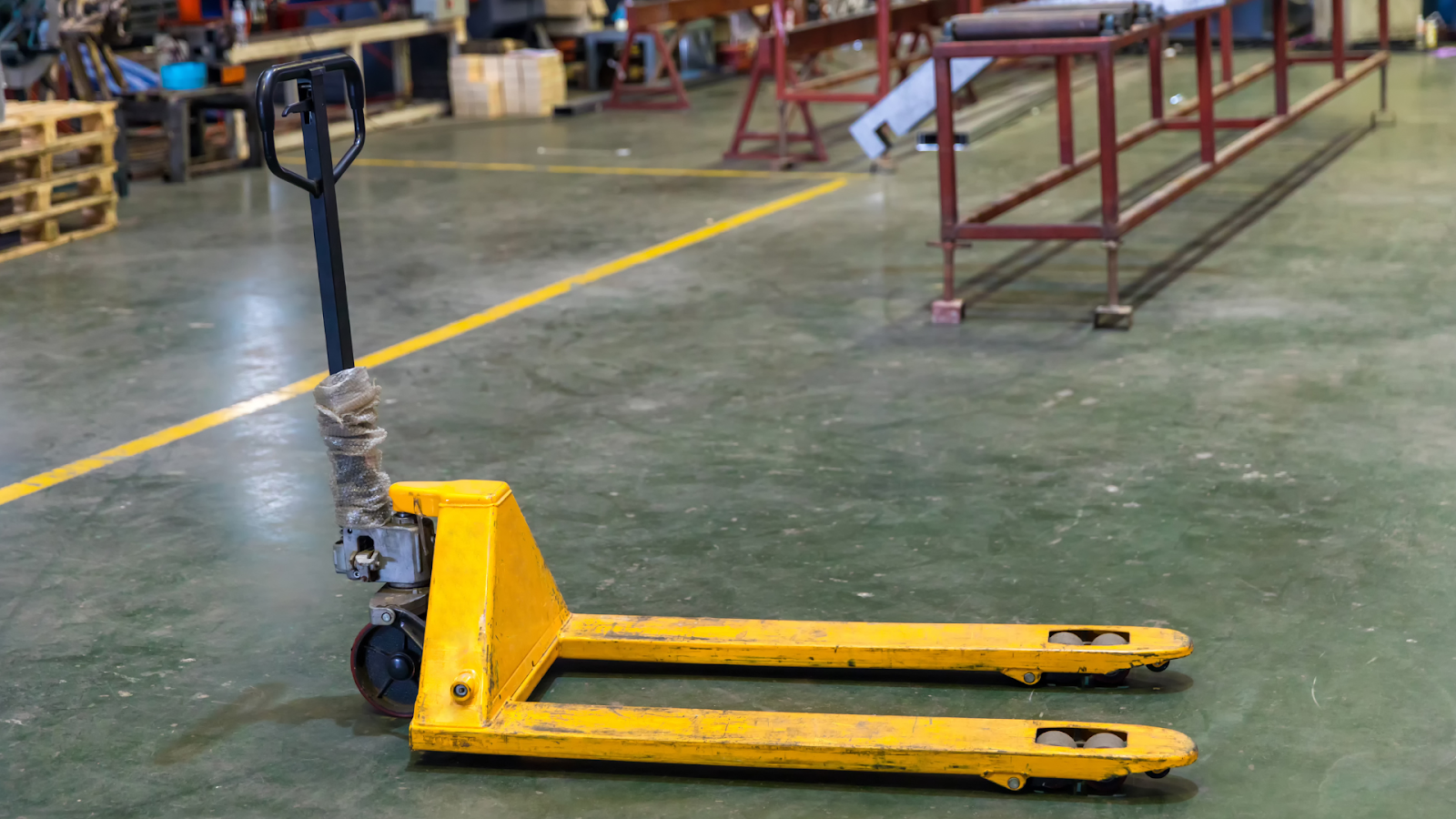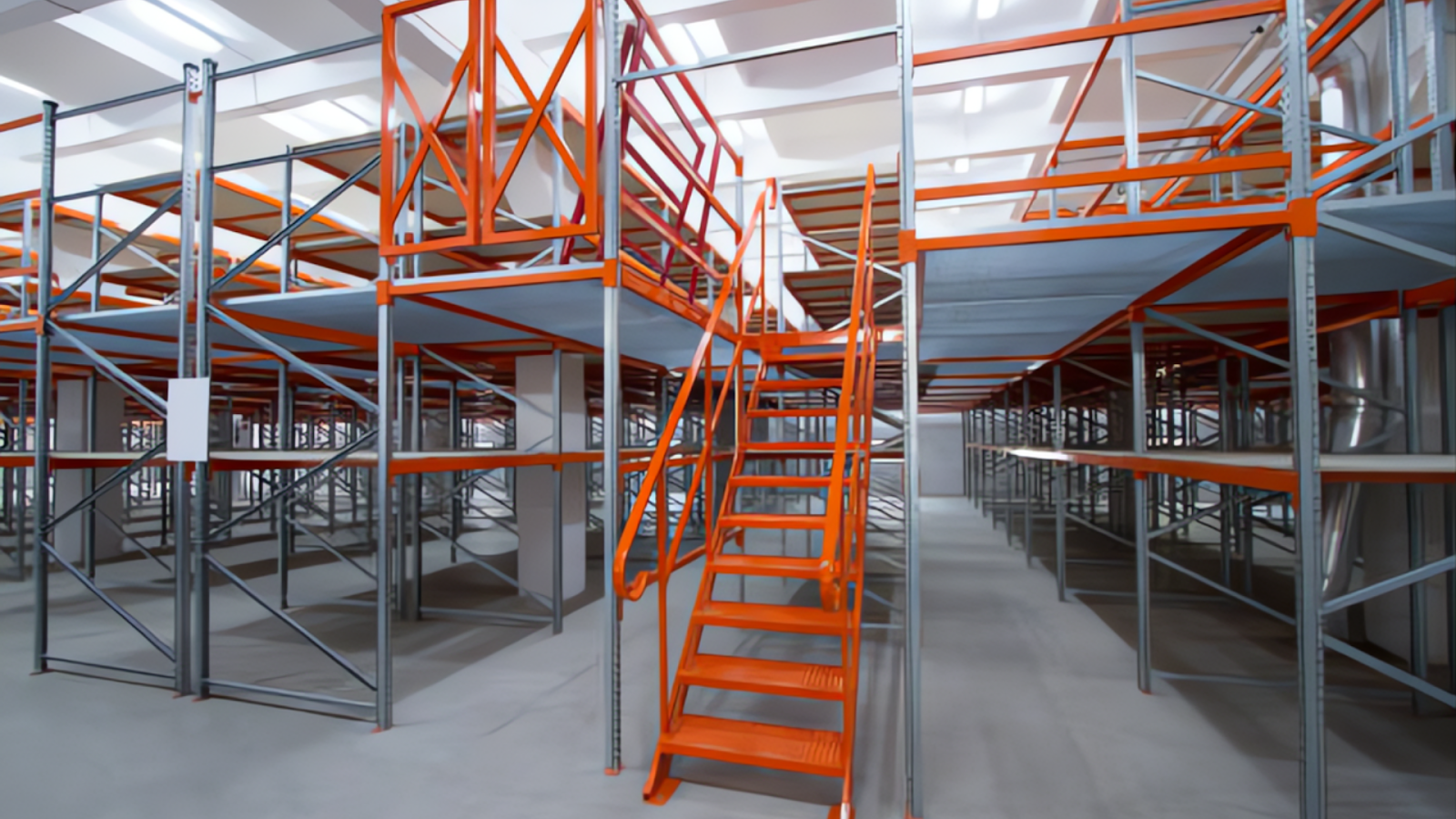Your loading dock is the critical control point of your operation. It is where supply chain velocity meets the physical constraints of your facility. By 2026, North America is expected to hold the largest market share of approximately 35% in the loading dock equipment industry.
This reflects the region’s advanced logistics infrastructure and growing demand for modern warehouse solutions. Inefficiencies here, whether from outdated equipment, safety incidents, or workflow delays, directly increase labor costs, slow turnaround times, and create frustrating bottlenecks that hinder overall productivity.
Addressing these challenges requires a focused approach to your dock's infrastructure. The correct equipment functions as a force multiplier, enabling your team to move materials more safely and faster, while protecting both your personnel and your inventory.
In this guide, you’ll find straightforward information about the essential equipment every loading dock should have. Understanding these basics will help you identify solutions that meet your operational goals while promoting safety and reliability.

The loading dock equipment consists of the machinery and systems designed to move materials across the dock leveler safely, quickly, and with minimal manual effort. It is the hardware that bridges the gap between your warehouse floor and the trailer, ensuring a seamless transfer of goods.
The significance of this equipment is measured in tangible operational outcomes. Its direct impact is seen in three key areas:
Manual handling of heavy loads on a busy dock presents a significant risk. Proper equipment, like dock lifts and levelers, eliminates the need for dangerous manual lifting and reduces strain injuries. Truck restraints and wheel chocks prevent catastrophic accidents like trailer creep or early departure.
Speed at the dock directly influences your entire operation's throughput. Equipment such as hydraulic dock levelers and vertically storing levelers accelerates trailer spotting and exchange. Dock lifts allow for simultaneous loading and unloading at multiple heights, removing delays.
Damage to goods, equipment, and your facility itself is a major cost. Dock seals and shelters protect inventory from weather damage. Correctly rated equipment prevents overloading failures that can damage both the dock and the trailer.
To achieve these benefits, you need a clear understanding of the core equipment categories that form a complete dock system.

A high-performance loading dock operates as an integrated system. Understanding the specifications and applications of each component is critical for selecting the right solutions for your facility's specific demands. Below is a detailed breakdown of the types:
Dock levelers bridge the gap and compensate for the height difference between the dock and a trailer bed. The choice between types depends on your volume, trailer variability, and budget. Types of doc levelers include:
Mechanical levelers function through a manual release lever and a spring-assist mechanism. This design offers a reliable solution with a lower initial investment. They are best applied in operations with consistent trailer heights and a moderate number of daily loading cycles, where their simplicity and durability provide long-term value.
Hydraulic levelers use an electric-hydraulic power unit for operation, typically activated by a push-button or walk-on command. This system provides greater lifting capacity for heavy loads and requires minimal physical effort from operators. Facilities with high daily volume, frequent trailer changes, and significant weight requirements will find that hydraulic systems support faster cycle times and reduce operator strain.
Vertical storing levelers are designed to pivot and store flush against the building when not in use. This design eliminates the pit post obstruction, removing a common tripping hazard and freeing up floor space directly in front of the dock door. The clear approach area improves staging capabilities and forklift maneuverability in congested dock environments.
Dock lifts provide vertical transportation of materials between non-dock doors, different building levels, or to and from the ground. They address scenarios where a standard leveler is not applicable. Dock lift types include:
Permanent dock-mounted lifts are installed directly into a dock pit, creating a flush-mounted, fixed solution. These lifts are engineered for high-cycle, high-capacity applications, such as transferring palletized goods between a dock and a yard truck or railcar. Their heavy-duty construction supports intensive industrial use as a long-term infrastructure investment.
Mobile yard lifts are self-contained, portable units mounted on wheels. They can be deployed on any hard, level surface in a shipping yard to create an instant loading point. This mobility provides critical operational flexibility, allowing you to load and unlock trucks anywhere outside the building.
This effectively increases your active dock capacity during peak periods without requiring construction.
Looking for a dock lift upgrade? Browse our dock lift product range to find the right one suitable for your production needs.
A primary safety system, restraints prevent trailer separation, a major cause of dock accidents. They physically engage the trailer's ICC bar to hold it securely in place. The two major types include:
Automatic restraints utilize sensors and automated hooks to engage the trailer’s ICC bar as the vehicle backs into position. This process often occurs without requiring the driver to exit the cab, which reduces the potential for human error and shortens the overall dock cycle time. The automation enhances procedural consistency.
Manual restraints require a dock worker to physically engage the locking mechanism on the trailer’s ICC bar. These systems provide a reliable, mechanical hold and are valued for their straightforward operation and maintenance. Their use requires a strict procedural check for visual confirmation of engagement.
These structures form an environmental and energy barrier, sealing the gap between the building and the trailer. The choice depends on climate control needs and trailer variety. Below is a detailed breakdown:
Dock seals are constructed from dense, compressible foam pads mounted on a frame around the dock door. The trailer backs into the pads, which compress to form a tight seal around its contours. This design is highly effective at preventing the infiltration of outside air, dust, and debris, making it ideal for temperature-controlled environments.
Dock shelters feature a rigid frame with fabric headers that contact the sides and top of the trailer. They are engineered to accommodate a wider variance in trailer sizes and are less susceptible to damage from repeated trailer impact. Their design allows for effective sealing even when trucks are not perfectly aligned.
This category includes the necessary components to create a comprehensively safe dock environment, often mandated by OSHA guidelines. Here’s what you need to know:
Wheel chocks are used as a secondary, redundant safety measure to immobilize the trailer’s wheels. They serve as a critical backup to mechanical restraints and are a fundamental requirement under OSHA guidelines for comprehensive dock safety protocols.
Dock lights are high-intensity, impact-resistant lights mounted at the dock door. They are designed to illuminate the dark interior of trailers fully. Adequate lighting is a necessary condition for preventing trips and falls and for ensuring accurate load handling, which directly reduces product damage.
Traffic signals are simple wall-mounted light systems that provide unambiguous visual communication to the truck driver. A red light indicates that operations are ongoing, while a green light signals that the dock is clear and it is safe to depart. This system prevents accidents caused by a trailer pulling away while personnel or equipment are still engaged.
With these safety equipment types in mind, the selection process requires a careful assessment of your facility's unique requirements.

Selecting loading dock equipment is a strategic decision that impacts safety, productivity, and long-term operational costs. The correct choices are not made from a catalog but from a clear assessment of your specific facility requirements, workflows, and constraints.
A methodical approach ensures your investment delivers expected returns and supports your operation for years to come. To select the right solutions for your facility, consider these key factors:
Start by evaluating the types of goods you handle, their weight, and volume. Heavy or bulky products require robust equipment like hydraulic dock levelers or dock lifts, while lighter operations may function well with mechanical levelers. Also factor in how often your dock operates daily, as high-frequency loading demands more durable and faster equipment.
Take accurate measurements of your dock height, door width, and length. Consider the types and size range of trucks servicing your facility, including trailer bed heights and any structural obstructions like bumpers or guards. This ensures selected equipment fits perfectly and handles the full range of vehicles without creating gaps or hazards.
Your dock area’s space availability influences what equipment can be installed. Edge-of-dock levelers suit tight spaces, while hydraulic systems might require pits or additional room. Account for traffic flow, maneuvering space for forklifts, and staging areas to maintain smooth operation.
Look for equipment with built-in safety measures, such as non-slip surfaces, guardrails, vehicle restraints, and emergency stops. Additionally, ensure the equipment complies with OSHA and relevant industry safety standards to protect workers and avoid liability.
Equipment with straightforward maintenance requirements helps reduce downtime. Choose products from manufacturers or distributors who offer reliable support, service plans, and readily available parts to keep your dock running smoothly.
Think beyond current needs. Select dock equipment that can handle potential changes in operation volume, new truck types, or expanded workflows. Flexible and modular solutions allow for easier upgrades, saving costs down the line.
Beyond mere specification, a critical part of the selection process involves identifying the non-negotiable safety features that protect your team.

Loading dock safety is achieved through intentional design and the selection of equipment with integrated protective features. Prioritizing these elements in your specification process mitigates risk, protects your personnel, and supports compliance with regulatory standards.
A primary defense against trailer separation incidents is a strong restraint system. Look for equipment that provides clear, positive confirmation of engagement with the trailer’s ICC bar.
Advanced systems offer visual and auditory indicators on both the inside and outside of the dock, confirming to the dock operator and the truck driver that the trailer is securely locked in place. This eliminates guesswork and procedural failures.
The working surface of dock levelers and plates is a critical safety zone. Equipment should feature an aggressive, non-slip surface pattern, often a diamond-tread or grit-impregnated design.
This treatment provides essential traction for forklift tires and worker footwear in all conditions, including rain, snow, and oil spills, significantly reducing the potential for slips and falls during load movement.
Critical equipment should include design elements that default to a safe position in the event of a failure. For example, hydraulic dock levelers should incorporate a holding valve or similar mechanism that prevents sudden collapse if a hydraulic line is compromised.
This engineering principle ensures the equipment maintains its position and load integrity, protecting personnel and assets underneath and on top of the leveler.
Safety is fundamentally rooted in the equipment’s ability to handle intended loads without failure. Insist on products that are clearly rated for specific capacities and built with high-grade steel and proven structural designs.
Overloading equipment is a primary cause of structural failure. Selecting equipment with a capacity that exceeds your maximum expected load provides a critical margin of safety and long-term durability.
Eliminate bottlenecks and improve safety with customized loading dock equipment. Get in touch with Source Equipment now to discuss your facility’s needs.
Once the right equipment is in place, protecting your investment and ensuring its reliability requires a disciplined maintenance strategy.
Proper maintenance is key to keeping your loading dock equipment running smoothly and avoiding costly downtime. When equipment functions reliably, your loading and unloading processes stay on schedule, supporting safety and steady productivity.
Follow these practical tips to maintain your dock equipment effectively:
This disciplined approach to maintenance ensures long-term performance, which begins with selecting the right partner for your initial investment.
Operational bottlenecks at your loading dock can slow down your entire supply chain. Delays in loading and unloading cause increased labor costs, missed deadlines, and worker frustration. Eliminating these bottlenecks requires dock equipment that keeps goods moving safely and quickly.
Source Equipment offers a range of durable dock lifts, pneumatic and hydraulic lifts, and related material handling equipment designed to streamline your loading dock processes.
Our products help you reduce delays and maintain steady throughput, even during peak operation times. From custom lift tables to modular dock systems, we work with you to deliver solutions built to last and support compliance requirements.
Tackle your operational challenges today by selecting dependable loading dock equipment tailored to your workflow. Contact Source Equipment to find out more and upgrade your dock equipment.
Essential equipment includes dock levelers (mechanical, hydraulic, or air-powered), dock seals or shelters, vehicle restraints, dock lifts, dock lights, and bumpers. Each plays a key role in safety, efficiency, and protecting goods during loading/unloading.
Consider factors such as the type and weight of goods, dock height, truck sizes, operational volume, available space, and safety needs. Selecting equipment that matches your specific workflow and compliance standards ensures smooth operations.
Look for guardrails, automatic vehicle restraints, anti-crush dock levelers, slip-resistant surfaces, adequate lighting, emergency stops, and compliance with OSHA safety guidelines to protect workers and reduce accidents.
Regular inspections should be conducted daily to monthly, depending on use, with lubrication of moving parts and professional hydraulic servicing as needed. Promptly addressing wear and tear reduces downtime and repair costs.
Vehicle restraints secure trailers to docks, preventing movement that could cause accidents or damage. They protect workers and cargo by stabilizing trucks during loading and unloading.




Ready to Upgrade Your Process Operations?